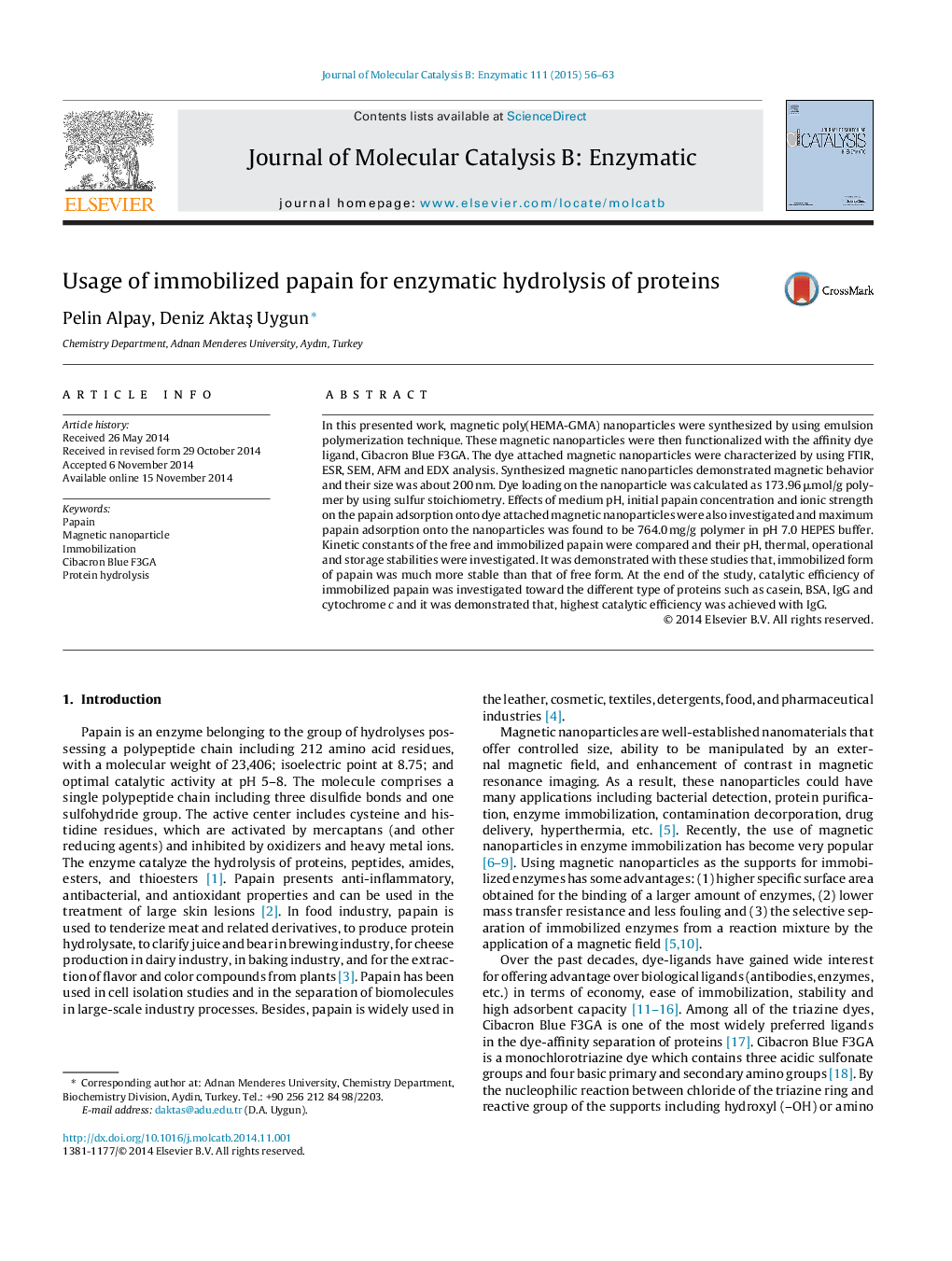| Article ID | Journal | Published Year | Pages | File Type |
|---|---|---|---|---|
| 69782 | Journal of Molecular Catalysis B: Enzymatic | 2015 | 8 Pages |
•Magnetic poly(HEMA-GMA) nanoparticles were synthesized by emulsion polymerization technique.•Prepared magnetic nanoparticles were functionalized with Cibacron Blue F3GA and were characterized with FTIR, ESR, SEM and EDX analysis.•Dye attached magnetic poly(HEMA-GMA) nanoparticles were used for the immobilization of papain.•Immobilized papain was used for enzymatic hydrolysis of various proteins.
In this presented work, magnetic poly(HEMA-GMA) nanoparticles were synthesized by using emulsion polymerization technique. These magnetic nanoparticles were then functionalized with the affinity dye ligand, Cibacron Blue F3GA. The dye attached magnetic nanoparticles were characterized by using FTIR, ESR, SEM, AFM and EDX analysis. Synthesized magnetic nanoparticles demonstrated magnetic behavior and their size was about 200 nm. Dye loading on the nanoparticle was calculated as 173.96 μmol/g polymer by using sulfur stoichiometry. Effects of medium pH, initial papain concentration and ionic strength on the papain adsorption onto dye attached magnetic nanoparticles were also investigated and maximum papain adsorption onto the nanoparticles was found to be 764.0 mg/g polymer in pH 7.0 HEPES buffer. Kinetic constants of the free and immobilized papain were compared and their pH, thermal, operational and storage stabilities were investigated. It was demonstrated with these studies that, immobilized form of papain was much more stable than that of free form. At the end of the study, catalytic efficiency of immobilized papain was investigated toward the different type of proteins such as casein, BSA, IgG and cytochrome c and it was demonstrated that, highest catalytic efficiency was achieved with IgG.
Graphical abstractFigure optionsDownload full-size imageDownload as PowerPoint slide
